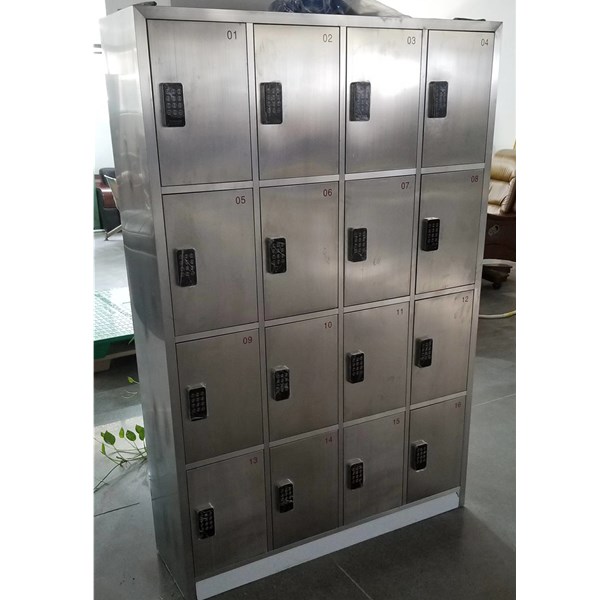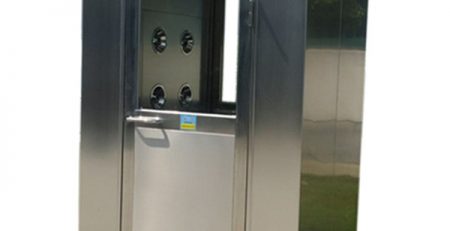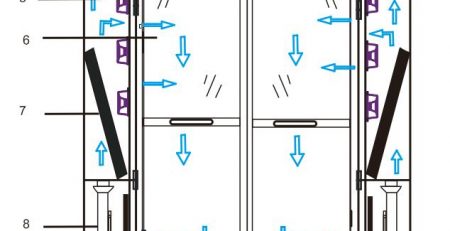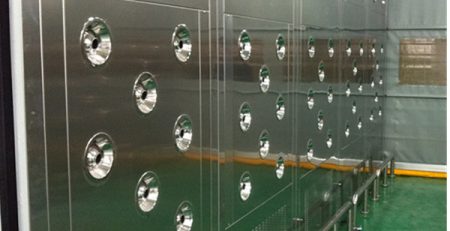Fresh Chemicals Storage and Transporting
Bottles of fresh chemicals are to be stored in one of the two chemical pass-through cabinets or in the small cabinets under the proper benches. The chemical bottles should be wiped down prior to being placed in the pass-through from the outside hallway to minimize particulates. Bottles of fresh acid or caustic chemicals other than developer should be transported from the cabinet to the hoods using a rubber bucket and one heavy nitrile glove. This allows the user to have one free hand to open the door and one protected hand to carry the bucket. Bottles should be returned to the proper storage location immediately after use. Rubber buckets should be left near the pass through cabinets.

Acids:
Fresh acids should be stored in the trays on the 2nd and 3rd shelves of the corrosives pass-through. There is also room for ~ 8 bottles of acid under the Acid Hood. To avoid unnecessary searching for a particular acid, commonly used acids will have a 27 specific location in one of these cabinets and the cabinets will be labeled with this information. These chemicals and their locations are designated on the Chemical Storage Chart. Other bottles must be stored in the corrosives cabinet. Over time, we may find that the frequently used chemical list changes and we will adjust the Chemical Storage Chart accordingly.
Bases/Caustics:
Fresh bases and caustic-based chemicals should be stored in the trays on the top shelf of the corrosives pass-through. This includes developers as well as strong bases. There is room for ~8 bottles of caustics under the Base/ Caustics Hood. Develops will be stored on the left side and strong bases will be stored under the right side. As with the acids, each chemical will have a specific location in one of these cabinets and the cabinets will be labeled with this information. These chemicals and their locations are designated on the Chemical Storage Chart. Developers will also be stored under the right hand cabinet of the Solvent Hood.
Hydrogen Peroxide:
Hydrogen peroxide should be stored with the bases in the corrosives pass through. It may also be stored in the right hand cabinet of the Base Hood.
Solvents:
Fresh solvents should be stored on the top two shelves of the flammables cabinet. They will also be stored in the left hand cabinet of Spinner Hood #1 and the left side of the Solvent Hood. Some SU-8 related solvents such as SU-8 developer and EBR PG will be 28 stored under the left side of the MEMS Hood. See the Chemical Storage Chart for details.
Photoresists, E-beam resists, Primers:
Fresh bottles of photoresist should be stored in the explosion-proof refrigerator in the lithography bay to preserve their lifetime. They may also be stored temporarily on the 2nd shelf of the flammables cabinet. Small bottles in-use may be stored on the bench top of Spinner Hood #1 and Spinner Hood #2. E-beam resists should be stored on the second shelf of the flammables pass-through. Photoresist primer should be stored on the second shelf of the flammables-pass through. Epoxy based resists such as SU-8 as well as fresh bottles of lift-off resists should be stored under the right side of the MEMS Hood.
CMOS bench:
This bench is listed separately because it is the only place where acids, bases, and solvents are to be used in the same hood. There is room for a few commonly used chemicals in the cabinets under the hood. Fresh and waste acids will go in the left hand cabinet. Fresh and waste solvents will go in the right hand cabinet. See the Chemical Storage Chart for details. The two middle cabinets are used to store the carboys for the two process tanks.




